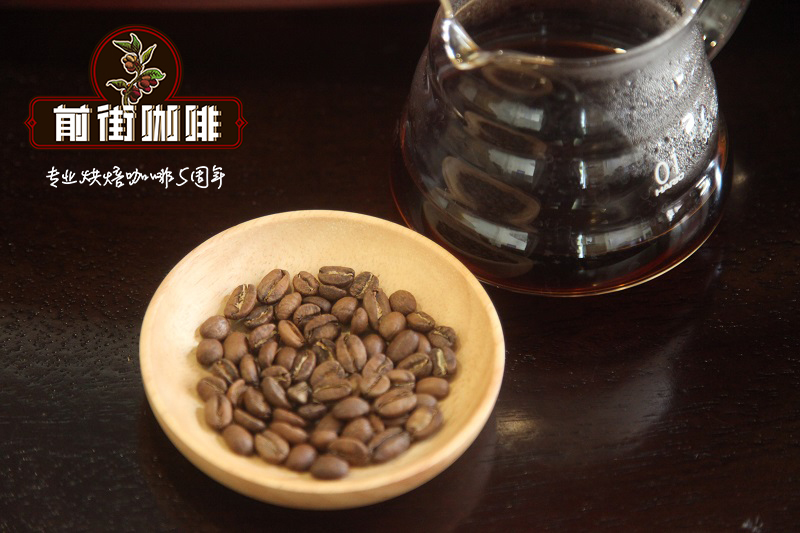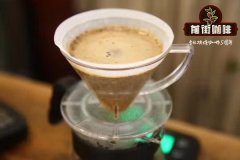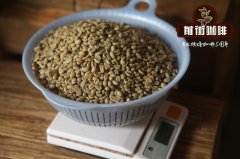What kind of coffee is micro-batch coffee? Micro-batch coffee famous manor introduce micro-batch coffee is it good?

Professional coffee knowledge exchange more coffee bean information please follow the coffee workshop (Wechat official account cafe_style)
This coffee micro-batch coffee comes from a specific area of an estate, sometimes from a small farm, or from a small plot of land shared by many producers.
Coffee is harvested and processed in small batches, and micro-batches of coffee are usually of very good quality because of higher labor costs, which in turn increases the back-end price. Terra said O'coffee 's micro-batch coffee had a cup score of about 87-89 points and produced about 40 packets of 60-kilogram sacks.
Behind this micro-batch coffee is coffee grown on smaller, more specific and more precisely controlled land, which is divided into four main assessment areas:
Traceability
No one will want to drink coffee from an unknown source, and the more details of the origin can be described, the more you will know about the coffee. The certification of this coffee is also important, so you can also know that this cup of coffee is environmentally sustainable or farmer-friendly.
Smaller batches of coffee are more traceable, and you can know where coffee is grown, under what conditions, and even its impact on the local environment. You start to have a little connection with coffee growers, and even ideally, buyers can work with farmers to create sustainability.
Uniqueness
Each planting and processing process will form a unique flavor of coffee (good or bad). Some coffee really have very unique flavor characteristics, some may be full of floral flavor, some may be sweeter.
If such coffee is combined into formula beans, these flavor characteristics may be masked. On the contrary, if such coffee is presented as a single product, it can reflect its unique flavor and the characteristics of batch processing.
It is important to keep historical data, and it is important to know clearly where the coffee comes from and that there is no coffee mixed with it from other farms.
Producers must work hard in the processing process to do so, especially in micro or nano batches. Tracking information and the location of coffee is key, as are organized gardens and processing plants. Coffee needs to be harvested, processed and stored separately. All information, such as batch name, batch number, variety, handling, etc., needs to be properly controlled and preserved.
The so-called micro-treatment is actually a small amount of coffee berries handled by coffee farmers themselves. Since 2000, Costa Rican farmers have bought dry washing systems, a set of about $25000 to $30, 000, which is a large investment.
As a result, each producing area began to have its own unique flavor of manor coffee beans, and participate in well-known coffee competitions (such as: COE), so that more international third wave of boutique coffee buyers can access the raw beans of these estates. Among them, the Treasure Manor is appreciated by Blue bottle Coffee, which is the best example!
Because of the serious water pollution problem in Costa Rica, most of them are treated by mechanical washing, but the treasure manor only specializes in honey treatment, and it is still black honey treatment, retaining all the sticky pulp layer, which is a high degree of honey treatment!
Important Notice :
前街咖啡 FrontStreet Coffee has moved to new addredd:
FrontStreet Coffee Address: 315,Donghua East Road,GuangZhou
Tel:020 38364473
- Prev

Panama Flower Butterfly Coffee Flavor Features Introduction Boquete Why
Flower Butterfly [Origin]: Boquete Baru Volcano Region [Variety]: Carduai, Kadulla, Guixia Geisha [Treatment]: Wash [Roast]: Medium (Light Roast) Flavor: Peaches, Nuts, Honey, Green Tea Panama belongs to Central America, bordering Costa Rica to the west and Colombia to the east. Anyone who knows anything about coffee should
- Next

The difference between dopa Lake Mantenin and Lin Dong Mantenin Coffee beans in the producing area of dopa Lake Mantenin
Professional coffee knowledge exchange more coffee bean information please follow the coffee workshop (Wechat official account cafe_style) Indonesia-Sumatra-Lindong Manning coffee beans-Lindong is a small town near Lake Toba, which is the world's largest volcanic lake, the hinterland is very large, so the coffee quality gap from the north to the east will be very large, and this is Lin.
Related
- Detailed explanation of Jadeite planting Land in Panamanian Jadeite Manor introduction to the grading system of Jadeite competitive bidding, Red bid, Green bid and Rose Summer
- Story of Coffee planting in Brenka region of Costa Rica Stonehenge Manor anaerobic heavy honey treatment of flavor mouth
- What's on the barrel of Blue Mountain Coffee beans?
- Can American coffee also pull flowers? How to use hot American style to pull out a good-looking pattern?
- Can you make a cold extract with coffee beans? What is the right proportion for cold-extracted coffee formula?
- Indonesian PWN Gold Mandrine Coffee Origin Features Flavor How to Chong? Mandolin coffee is American.
- A brief introduction to the flavor characteristics of Brazilian yellow bourbon coffee beans
- What is the effect of different water quality on the flavor of cold-extracted coffee? What kind of water is best for brewing coffee?
- Why do you think of Rose Summer whenever you mention Panamanian coffee?
- Introduction to the characteristics of authentic blue mountain coffee bean producing areas? What is the CIB Coffee Authority in Jamaica?

